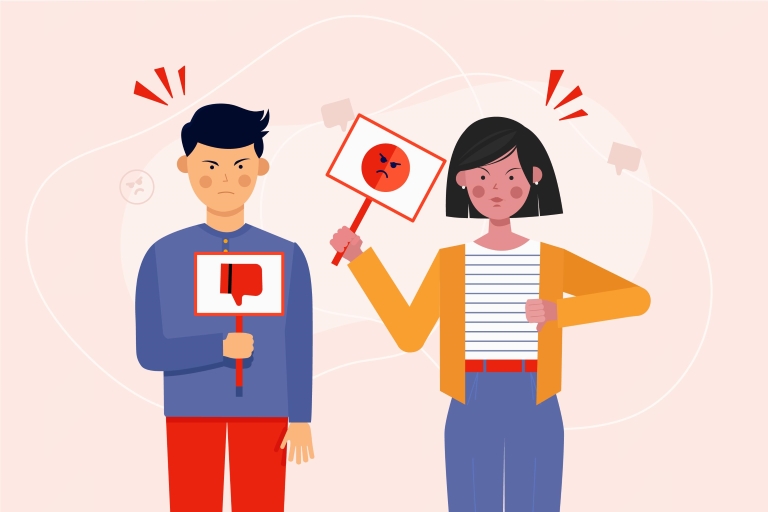Are you struggling to make sense of the puzzling behavior of a dismissive avoidant partner after a breakup? You’re not alone. Making through the complexities of post-breakup interactions with someone who has a dismissive avoidant attachment style is challenging and emotionally draining. Let’s have a look into why dismissive avoidants behave the way they do after a breakup and explore strategies to cope and move forward.
How Dismissive Avoidants Behave After Breakup

Understanding the behavior of dismissive avoidant individuals after a breakup provides valuable insight into their actions. Dismissive avoidants, characterized by their reluctance to rely on others and discomfort with emotional intimacy, often exhibit specific behaviors post-breakup.
Withdrawal and Emotional Distance
Dismissive avoidants tend to withdraw emotionally and create distance in relationships, even more so after a breakup. This can manifest as limited communication, reluctance to engage in discussions about the relationship, and avoidance of emotional vulnerability.
Fear of Intimacy
After a breakup, dismissively avoidant individuals may experience heightened fear of intimacy and vulnerability. They may shut down emotionally to protect themselves from further hurt, leading to detached behavior and a reluctance to engage in meaningful conversations.
Difficulty Expressing Emotions
Expressing emotions can be challenging for dismissive avoidants, especially in the aftermath of a breakup. They may struggle to articulate their feelings or express empathy towards their former partner, leading to perceived indifference or lack of closure for the other person.
Defense Mechanisms
Dismissive avoidants may resort to defense mechanisms such as denial or minimization of their emotions to cope with the pain of a breakup. This can result in seeming coldness or aloofness to their ex-partner, further complicating the process of moving on.
Challenges of Dealing with Dismissive Avoidants Post-Breakup

Lack of Communication
One of the most prominent challenges is the lack of communication from the dismissive avoidant partner. They may avoid discussing the breakup or their emotions, leaving the other person feeling confused and frustrated.
Emotional Rollercoaster
The unpredictability of emotions can create an emotional rollercoaster for the non-dismissive partner. They may experience periods of hope followed by disappointment when the dismissive avoidant partner withdraws again.
Feeling of Rejection

Dealing with a dismissive avoidant partner after a breakup can evoke feelings of rejection and inadequacy in the non-dismissive individual. The dismissive avoidant’s inability to express emotions or provide closure can exacerbate these feelings.
Confusion and Ambiguity
The ambiguous signals from a dismissive avoidant partner post-breakup can lead to confusion and uncertainty. It can be challenging to decipher their true feelings and intentions, causing distress for the non-dismissive partner.
Strategies for Coping and Moving On

1. Prioritize Self-Care
Focus on taking care of yourself physically, emotionally, and mentally. Engage in activities that bring you joy and relaxation, whether it’s exercise, spending time with loved ones, or practicing mindfulness.
2. Define Limits
Create distinct boundaries with your partner who tends to dismiss or avoid emotional connections to safeguard your emotional health. Clearly express your requirements and anticipations with openness and assertiveness, and be ready to uphold those limits if they are breached.
I know firsthand how tough it can be to deal with a dismissive avoidant partner after a breakup. Remember, it’s okay to feel hurt and confused, but don’t let it consume you. Surround yourself with supportive friends and seek professional help if needed. Most importantly, never forget your worth and the potential for growth that lies ahead. You’ve got this, and brighter days are on the horizon.
3. Look for Assistance
Connect with friends, family, or a therapist to seek support and guidance as you navigate through the difficulties of this period. Having a supportive network can offer validation, encouragement, and a fresh perspective to help you manage the intricate emotions that follow a breakup.
4. Practice Patience and Understanding
Recognize that healing from a breakup takes time, and be patient with yourself and your emotions. Try to understand that your dismissive avoidant partner may be struggling with their own issues and may not be capable of providing the closure or support you desire.
5. Focus on Personal Growth
Use this period of transition as an opportunity for personal growth and self-reflection. Explore your interests, set new goals, and invest in activities that contribute to your long-term happiness and fulfillment.
